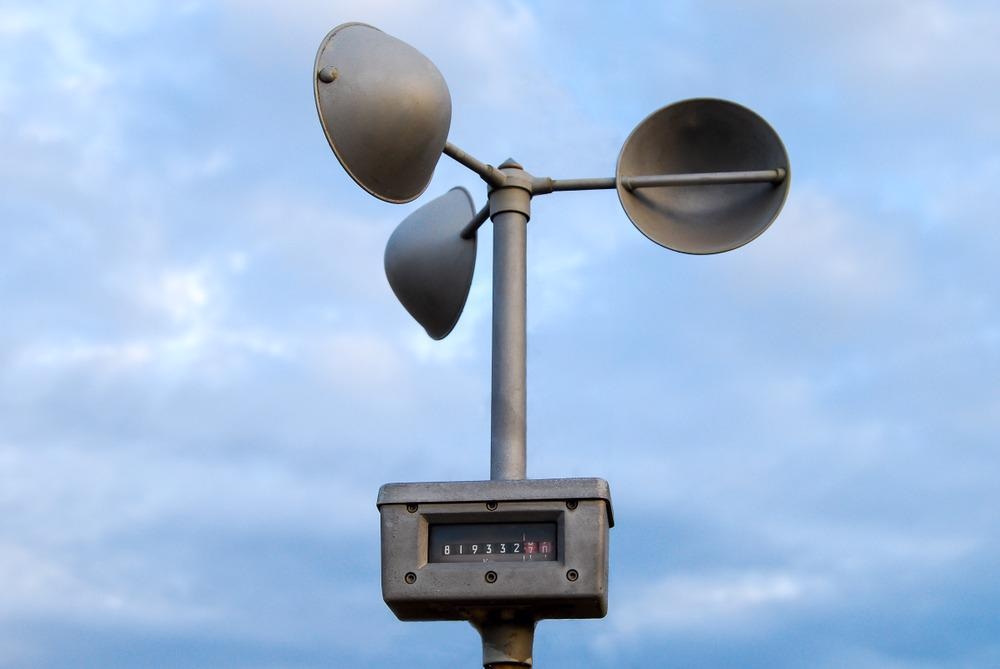Understanding Various Kinds Of Anemometers for Various Applications
Understanding Various Kinds Of Anemometers for Various Applications
Blog Article
Anemometers Revealed: Comprehending Their Value in Environmental Surveillance and Precaution
The function of anemometers in ecological tracking and safety and security steps is often underestimated, yet their value is obvious. From weather forecasting to air travel safety, anemometers play a critical function in offering exact data that informs decision-making processes and improves total safety.
Background of Anemometers
The evolution of anemometers can be mapped back to the old civilizations where basic wind measuring devices were initial made use of. These early wind dimension devices laid the structure for the growth of more advanced anemometers in time. One of the earliest well-known anemometers was the hemispherical cup anemometer invented by Leon Battista Alberti in the 15th century. This layout was composed of four hemispherical cups that accumulated wind energy, providing a dimension of its intensity based on the speed of turning.
Over the years, developments in modern technology led to the advancement of even more modern anemometers, including ultrasonic anemometers and laser Doppler anemometers, supplying enhanced accuracy and effectiveness in gauging wind speed and instructions. The background of anemometers showcases an impressive trip of development and progression in the area of meteorology.
Kinds Of Anemometers
Throughout the area of meteorology, various sorts of anemometers have actually been established to properly measure wind speed and direction. The most common type is the mug anemometer, which consists of 3 or four mugs installed on horizontal arms that revolve with the wind. As the cups rotate, the speed at which they revolve is straight proportional to the wind rate. Another extensively used kind is the vane anemometer, which features a tail or fin that aligns itself with the wind direction. This alignment allows the gadget to establish the wind direction. Sonic anemometers make use of ultrasonic signals to determine wind rate and instructions precisely. They are frequently made use of in study applications as a result of their high precision. Hot-wire anemometers run based on the concept that the cooling result of wind on a warmed wire is proportional to the wind speed. These anemometers appropriate for measuring low wind speeds with high accuracy. Each kind of anemometer has its staminas and is selected based on the specific needs of the monitoring task handy.
Applications in Meteorology
Having actually talked about the numerous kinds of anemometers utilized in weather forecasting for determining wind speed and direction, it is vital to discover their practical applications in the field. Anemometers play a crucial role in weather forecasting by offering real-time and exact information on wind conditions (anemometer). Meteorologists use anemometers to keep track of wind speed and direction to anticipate weather patterns, problem cautions for extreme climate events like tornados, cyclones, and twisters, and examine weather for aeronautics safety
In weather forecasting, anemometers aid in comprehending neighborhood and regional wind patterns, which are crucial for predicting weather condition changes and identifying climatic trends. These devices are additionally utilized in research to examine microclimates, city warmth islands, and air contamination diffusion. In addition, anemometers are used in farming to maximize plant administration practices, such as watering and chemical application, based on wind conditions.
Significance in Aeronautics Safety
An indispensable aspect of guaranteeing webpage air travel safety and security exists in the careful monitoring of wind conditions using anemometers. Anemometers play a crucial role in air travel by giving real-time information on wind rate and direction, helping pilots in making notified choices throughout touchdown, flight, and liftoff. Solid and uncertain winds can substantially affect aircraft operations, making it vital for aeronautics authorities to rely upon exact wind measurements to make sure the safety of passengers and crew.

In the dynamic environment of aeronautics, where also small modifications in wind rate and direction can have extensive results, anemometers stand as important tools for promoting protected and safe air traveling.
Duty in Environmental Research Study
Anemometers play a critical duty in ecological research by providing important information on wind speed and direction. By accurately measuring wind features, anemometers help researchers analyze the movement of contaminants in the air, examine the impact of commercial discharges, and predict the spread of contaminants in the environment.


Verdict
In conclusion, anemometers have actually played an essential role in environmental tracking and safety actions. Recognizing the significance of anemometers is important for properly gauging wind speed and instructions, which is essential for Our site anticipating climate patterns, making sure risk-free aeronautics procedures, and carrying out environmental research studies.
One of the earliest recognized anemometers was the hemispherical mug anemometer developed by Leon Battista Alberti in the 15th century. Over the years, advancements in innovation led to the development of more modern anemometers, including ultrasonic anemometers and laser Doppler anemometers, offering enhanced precision and efficiency in determining wind rate and instructions. Hot-wire anemometers operate based on the concept that the cooling impact of wind on a warmed cord is symmetrical to the wind rate. Meteorologists make use of anemometers to monitor wind speed and instructions to forecast climate patterns, problem warnings for serious climate occasions like cyclones, storms, and tornadoes, and assess climatic conditions for aeronautics safety.
Understanding the value of anemometers is crucial for accurately measuring wind speed and direction, which is essential for predicting weather patterns, making sure secure aeronautics procedures, and performing environmental researches. (anemometer)
Report this page